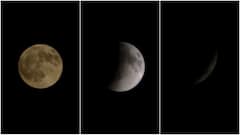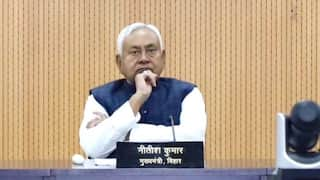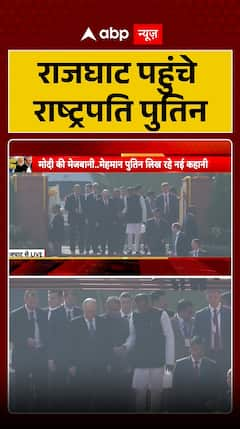EXCLUSIVE: India Has A Very Long Tradition Of Particle Physics, Says CERN Physicist Archana Sharma
India has been involved in particle physics research since the beginning of the 20th century. Indian physicist Satyendra Nath Bose is one of the people the Higgs Boson is named after.

Particle physics, also known as high-energy physics, deals with the study of the fundamental subatomic particles such as protons, neutrons and electrons, and also matter and antimatter. This field explores the structure and forces at play at this level of existence, involves quantum mechanics, and gives utmost importance to symmetry. The invention of the atomic bomb was a result of discoveries and research in particle physics. India has been involved in particle physics research since the beginning of the 20th century.
The Higgs Boson, or the God Particle, discovered on July 4, 2012, in experiments on the Large Hadron Collider (LHC) at CERN, Geneva, Switzerland, is considered one of the most important scientific discoveries of the modern era. The Higgs Boson provides evidence for the Standard Model of Particle Physics, which describes how various particles make the universe, and how the world is constructed.
The Higgs Boson is known as the God Particle because its existence is essential for the Standard Model to be correct. It explains why other particles have a mass. The particle is named after British theoretical physicist Peter Higgs and Indian physicist Satyendra Nath Bose who, along with Albert Einstein, proposed a theory on the characteristics of bosons, one of the two broad categories of subatomic particles. The other category of subatomic particles includes fermions. The Higgs Boson is a type of boson.
ALSO READ | What Are Dark Matter And Dark Energy? Here's What A CERN Scientist Says
On June 4, 1924, Bose mailed a short manuscript to Einstein in order to use the latter's influence to get those ideas published. Bose's mathematics went on to be known as Bose-Einstein statistics. These refer to the statistics of a system where one cannot tell the difference between any of the particles, and the particles are bosons.
This shows that India has had a major role to play in particle physics since the early 20th century.
On the sidelines of a physics conclave held at Shiv Nadar School, Gurgaon, on July 25, 2023, ABP Live spoke to Dr Archana Sharma, a senior physicist at CERN, and the head of the engagement office for the Compact Muon Solenoid, and asked her about India's role in particle physics.
Dr Sharma said that given India's limited resources, the country is doing a very good job in particle physics. She also said that there is always room for more to be done, and room for improvement.
“I think that India has a very long tradition of particle physics. And there are very big premier institutions working in this field. Of course, there is always room for improvement. And there is always room for more to be done. But given our limited resources, we are doing a very good job,” Dr Sharma said.
She stated that India is participating in many experiments, including the CMS experiment where she works, and the ALICE experiment. ALICE, which stands for 'A Large Ion Collider Experiment', is a detector whose role is to study the physics of strongly interacting matter at extreme energy densities at the LHC.
ALSO READ | Oppenheimer: The Manhattan Project, And How It Developed The Atomic Bomb
Asserting that India is contributing in a 'good way' to particle physics, Dr Sharma said, "India is extremely good in software. India is contributing in a good way to the analysis of the data that comes from the collider. The country is also building detectors. In the past, detectors have been built, and in the future also, there are plans to build large detectors.”
She also said that there is huge potential for everyone, including high school students, to participate in particle physics. “There is a lot of open data that exists, and scientists can access the data. A lot of work has been done, and a lot of more work can be done.”
Emphasising the role played by events such as the physics conclave recently held at Shiv Nadar School, Monica Sagar, the institute's director principal, said, "The younger generation needs live exposure to ground-breaking research scientists and thinkers so that they find good role models away from the shallow social media moguls. Even if 4-5 students from our country are motivated to follow Dr Archana Sharma or Dr Jahnavi Phalkey's footsteps and enter the world of BARC, ITER, IISc, CERN, and NASA, I would think that our efforts have proved fruitful.”
Dr Phalkey, a filmmaker, a historian of science and technology, and the Founding Director of Science Gallery, Bengaluru, was present at the event.
It is important to attract a larger number of students to STEAM, which refers to the educational approach involving science, technology, engineering, the arts, and mathematics. Explaining how interest in STEAM activities can be ignited in the minds of common people, Vinita Sharat, Central Program Coordinator, STEAM, Shiv Nadar School, said, "To foster a deeper understanding of STEM/STEAM, the most effective approach is to involve people from all walks of life, coming together from different backgrounds and communities. By addressing real-life challenges that exist in our society or villages, we can encourage them to explore and solve these issues using STEAM applications.”
She suggested that organising designated 'problem-solving days' in public spaces will draw the attention of the general public, and inspire them to embrace STEM learning.







































